Stepping into the Acropolis Museum in Athens honestly changed the way I see the Parthenon. Getting so close to the original sculptures and artifacts made me realize just how grand and beautiful this ancient wonder really is—way more than I expected.
It’s not just about staring at marble statues. It’s about feeling the stories, the history, and the creativity woven into every piece.
In Greece, most people focus on the Parthenon itself, but the museum gave me a deeper understanding of why this monument matters. The displays, especially in the Parthenon Gallery, let you imagine how everything once fit together high above Athens.
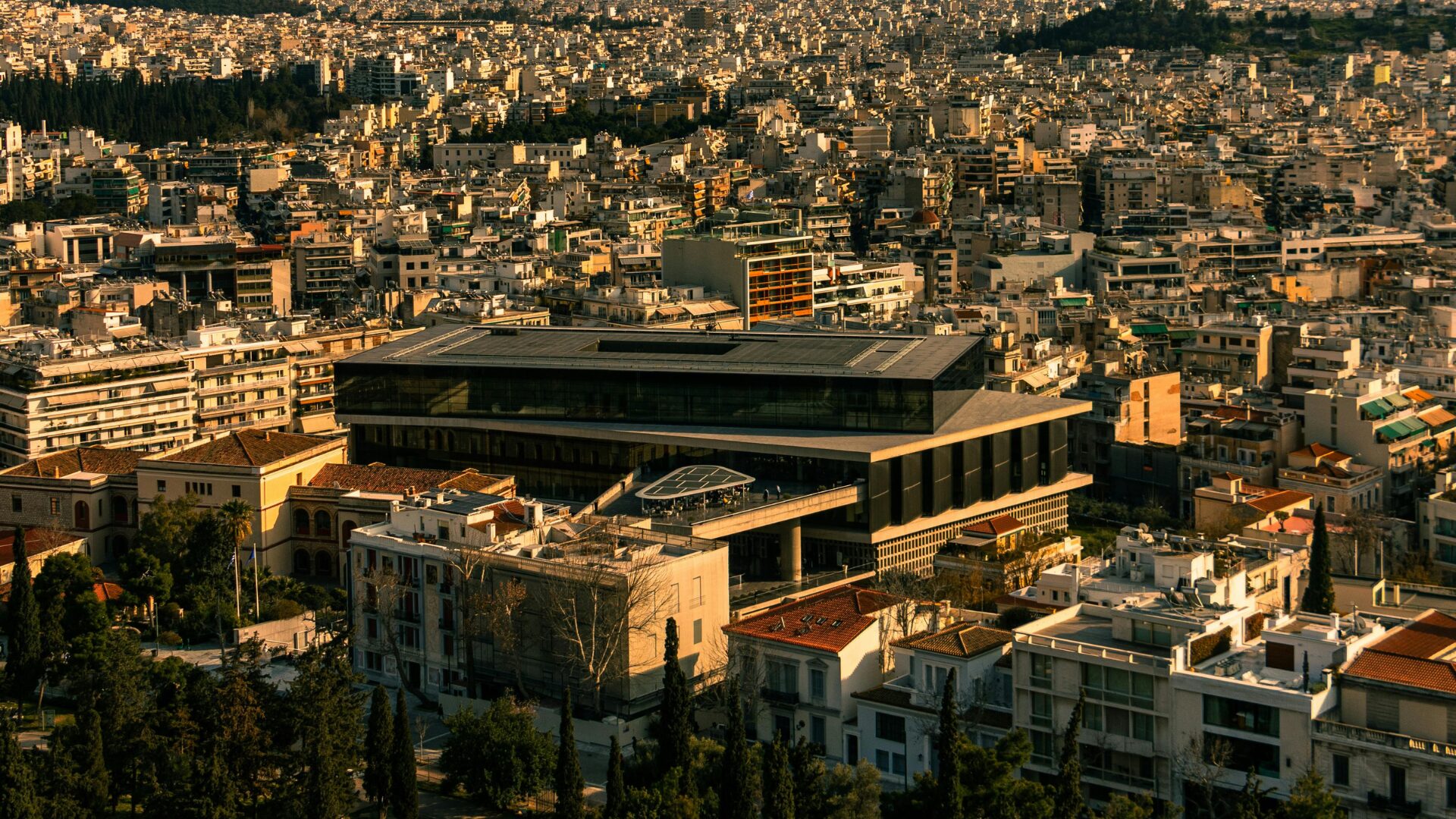
If you’re heading to Athens, the Acropolis Museum should definitely be on your list. It’s a must-visit spot for anyone hoping to connect with the real spirit of ancient Greece and see the Parthenon in a whole new light.
First Impressions: Arriving at the Acropolis Museum
Walking up to the Acropolis Museum for the first time, I took in how the bold architecture blends with the old city around it. The building’s modern look still feels inviting, and honestly, the sense of discovery starts before you even get inside.
Atmosphere and Design
From the outside, the museum stands out—glass and steel right at the foot of the Acropolis. Huge glass panels and open spaces let sunlight flood in from every direction.
Natural light sweeps across the floors, making the ancient statues look almost alive.
The museum keeps its lines clean and the décor minimal, so all eyes go to the artifacts. I thought it was pretty cool that parts of the floor are see-through, revealing ancient ruins beneath your feet.
Clear signs and maps greet you at the entrance, so you won’t feel lost or overwhelmed.
Even the way you move through the building echoes the real climb up the Acropolis hill. Wide ramps and elevators make it easy to go upward.

Everything feels accessible and thoughtfully planned.
Stunning Views of the Acropolis
Inside, you get some of the best views of the Acropolis and Athens I’ve ever seen. The top-floor Parthenon Gallery has these floor-to-ceiling windows that frame the Parthenon perfectly.
As I wandered around the displays, I could look up and spot the real temple, lined up with the sculptures and models all around me.
On clear days, you can even catch the Saronic Gulf glimmering in the distance. The museum’s position really shows off Athens from every angle, making it obvious why the Acropolis means so much to the city.
It’s tough not to pause every few steps just to take it all in.
Whether it’s early morning or sunset, the ancient ruins against the city are just unforgettable. That view made me appreciate the Parthenon’s place in Athens even more.
Welcoming Spaces for Visitors
The entrance hall feels spacious and bright with all that natural light. Staff usually stand by the doors, handing out maps or answering questions as people come in.
Benches and quiet corners give you places to rest, which you’ll want after climbing the hill to get there.
There’s a cozy café on the second floor with a balcony facing the Acropolis. I grabbed a coffee and just stared at the Parthenon for a while.
Restrooms, lockers, and the gift shop are all clearly marked and easy to find.
Families, solo travelers, and groups all seem to fit right in here. The open, friendly vibe encourages everyone to explore at their own pace, making the Acropolis Museum more than just a stop—it’s a place to actually experience and learn.

Discovering the Parthenon Through the Museum’s Collections
Walking into the Acropolis Museum, I finally saw the genius behind the Parthenon’s art and architecture. Every display—marble statues, tiny artifacts—shared stories I’d never heard in school.
The Parthenon Gallery Experience
On the top floor, the Parthenon Gallery immediately pulled me in. The whole space is built to mimic the real Parthenon, with the same orientation and shape.
Glass walls let sunlight pour in, just like it once did on the Acropolis.
The marbles are arranged by side—North, South, East, West—so you can picture how the temple looked 2,500 years ago. I felt closer to ancient Greece than I ever have before.
The gallery’s layout makes it easy to compare each panel and corner.

Tip: Go in the late afternoon for the best natural light—it really brings out the details on the sculptures.
Art and Sculpture: A Close-Up Look
In the museum, I could stand just inches from sculptures made under Phidias’ direction. The faces, hair, even the feathers on the marble owl are so detailed, it’s wild to think such basic tools could create them.
Mythological scenes—gods wrestling giants, riders on horses—seemed to leap off the stone.
Reading about the symbolism while seeing the pieces made me appreciate them more. Athena’s armor, the wild curls of a centaur—they weren’t just for show; they had meaning for the Athenians.
One thing that surprised me: Some statues still have traces of their original paint. It’s a good reminder that these weren’t always plain white—they burst with color back in the day.
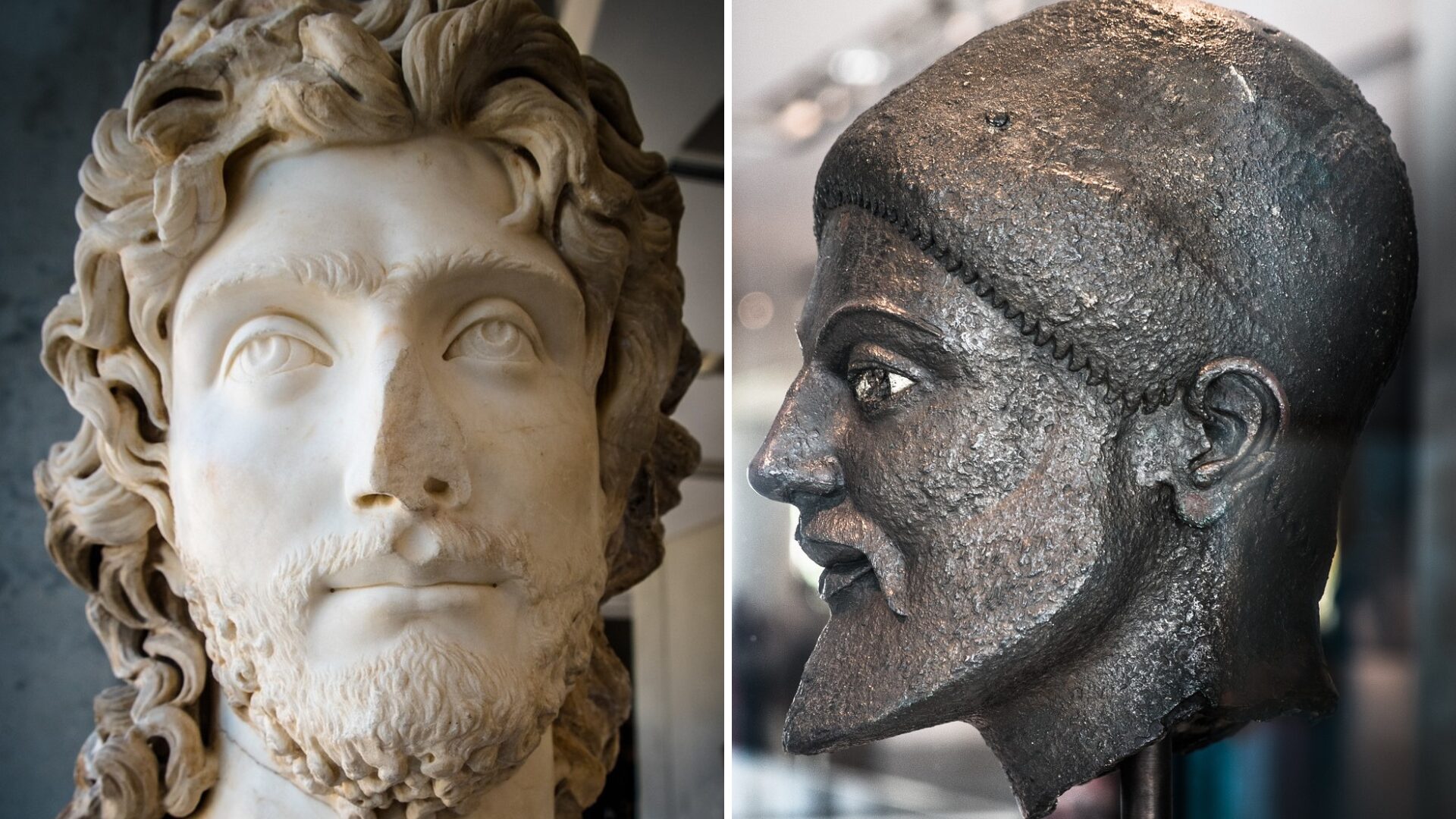
Connecting Ancient Greece to Today
Exploring the museum, I realized just how many modern ideas started right here on the Acropolis. The Parthenon was more than a temple—it was a place for art, civic pride, and mythology all at once.
Artifacts like coins with Athena’s owl really connected me to daily life in ancient Athens.
Seeing those, alongside big statues and everyday items, helped me understand how mythology was part of everything.
The museum bridges thousands of years. I could appreciate both the ancient achievements and the ongoing work to keep them alive, making Athens’ history feel real and present—not just something in a textbook.
Unveiling the Stories Behind the Parthenon Marbles
Walking through the Acropolis Museum, I got a new take on the famous Parthenon marbles. Their history, the debates, and the artistry all hit harder when you see them in person.
The Original Marbles and Their Journey
The Parthenon once stood at the heart of ancient Athens, with marbles showing gods, heroes, and everyday life. Artists created these sculptures in the 5th century BC to decorate the temple and tell the story of Athenian culture.
Over the centuries, earthquakes, wars, and empires damaged the site. In the early 1800s, Lord Elgin, a British diplomat, took many of the marbles while the Ottomans ruled Greece.
He sold them to the British Museum, where they still stay today.

Greek archaeologists have uncovered and restored many fragments since then. The Acropolis Museum in Athens now displays original pieces and detailed replicas, giving you a nearly complete look at the Parthenon’s decoration.
Seeing them in Athens, so close to their original home, made the stories carved in marble feel immediate and real.
The Elgin Marbles Controversy
Lord Elgin’s removal of the marbles started a debate that’s still going. Many Greeks and supporters want the sculptures back in Athens, believing they’re a core part of Greek identity.
The British Museum says it acquired the marbles legally and protects them well in London.
Inside the Acropolis Museum, I felt a quiet sense of pride but also loss. The museum leaves empty spaces where the missing marbles should be, making the absence just as visible as the art.
This setup really makes you think about ownership, responsibility, and what cultural heritage means.
Seeing the marbles up close in Athens, I realized how much their original setting matters for understanding their history and beauty. This controversy isn’t just about museums—it’s about where art truly belongs.
What Makes the Parthenon Marbles Unique?
What really struck me about the Parthenon marbles was the craftsmanship. Each panel is full of detail—movement, emotion, even the folds in clothing.
These aren’t just stones; they’re remarkable examples of human creativity from almost 2,500 years ago.
The marbles stand out for their scale and for how they tell a story. They wrap around the temple, blending art and architecture in a way that turned the Parthenon into a symbol of Athens.
You see ancient processions, epic battles—every figure is carefully carved.
During my visit, I noticed how the museum uses new tech and lighting to show off these details. Labels, models, and multimedia displays add context without feeling overwhelming.
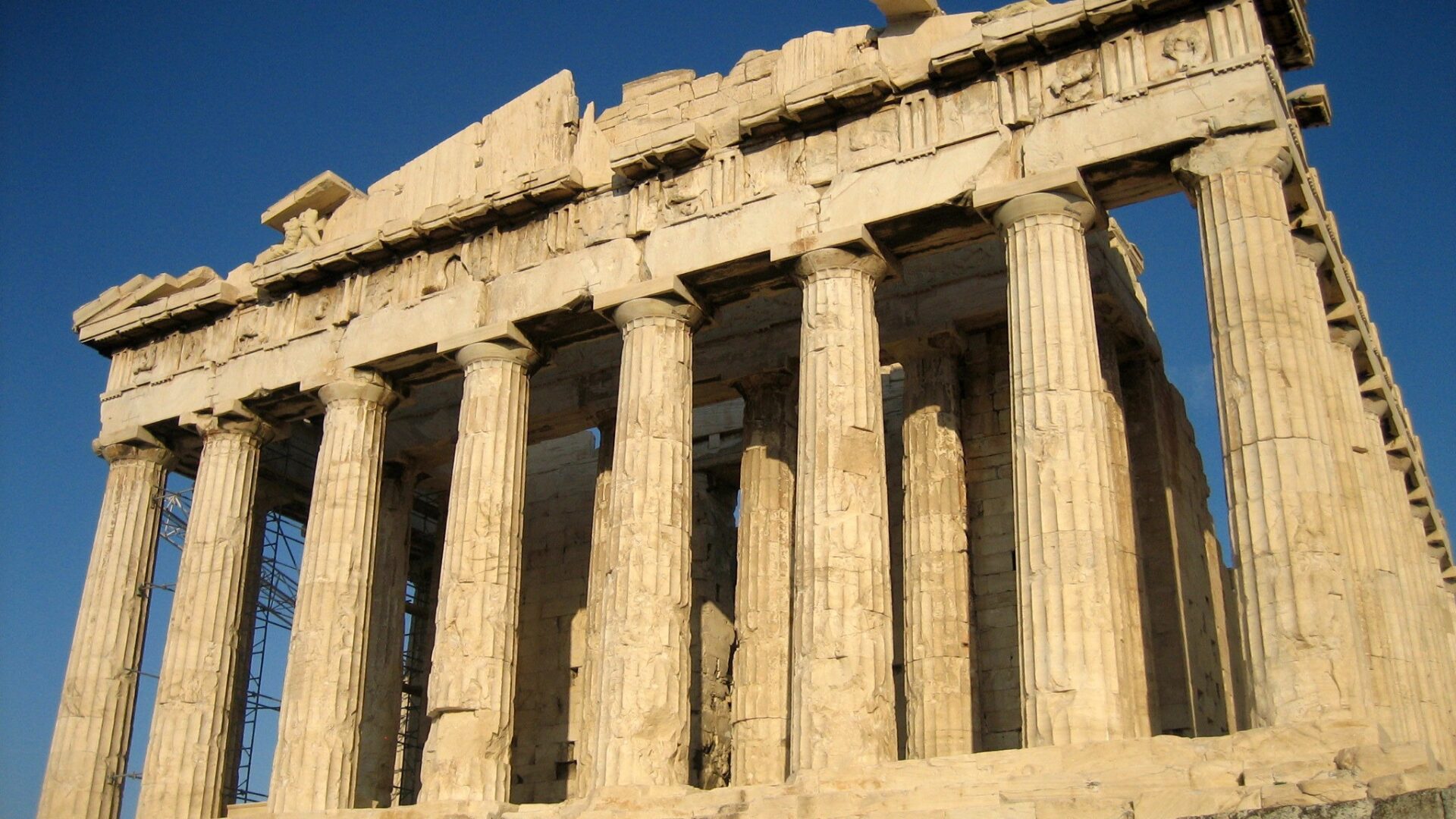
The Acropolis Museum lets you really appreciate the marbles’ artistry and legacy in a space that connects past and present.
Highlights of the Ancient Monuments Around the Acropolis
While the Parthenon is the obvious star, the monuments around the Acropolis bring ancient Athens to life in their own ways. Each site offers a unique story, some amazing art, or a view you won’t forget.
Erechtheion and the Famous Caryatids
Just north of the Parthenon, the Erechtheion really caught my eye with its unusual shape and deep mythology. This temple isn’t just a design masterpiece—it’s tied to the legendary contest between Athena and Poseidon for Athens.
I spent extra time at the Porch of the Caryatids, where six elegant, lifelike stone maidens (the Caryatids) hold up the roof instead of ordinary columns.
Each Caryatid is a little different, with flowing robes that show the skill of ancient artists. I learned that five originals are now in the Acropolis Museum, with the sixth in the British Museum.
Seeing the real ones up close helped me appreciate the details that have lasted over 2,400 years. With its stories and beauty, the Erechtheion is a highlight I’d recommend to any history lover or curious traveler.
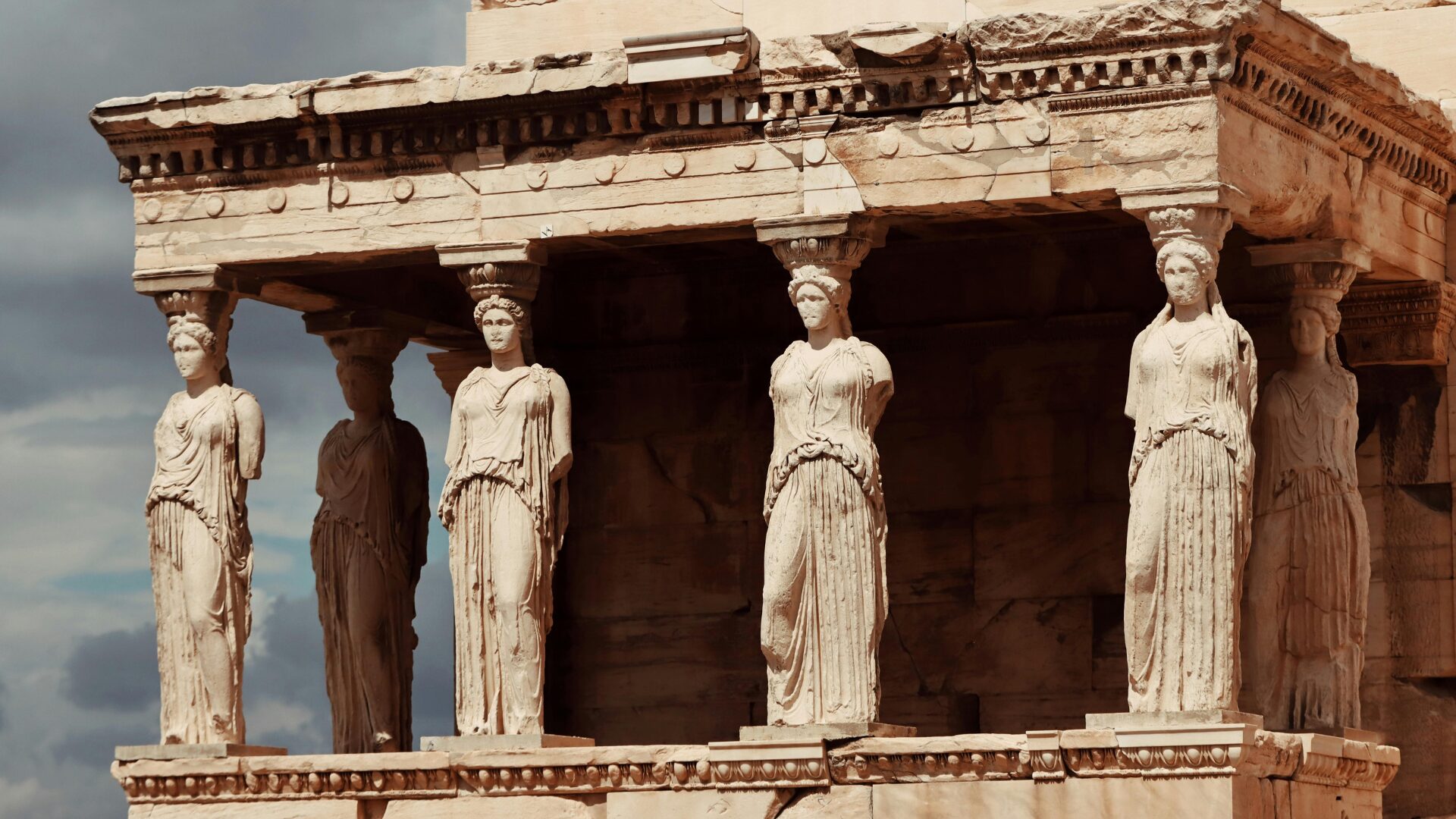
Temple of Athena Nike and Propylaea
Right at the entrance to the Acropolis, the Propylaea sets the tone—the ancient gateway that once welcomed Athenians and visitors. Its huge marble columns and symmetry made me feel like I was arriving somewhere truly important.
To the side, the Temple of Athena Nike sits on a high platform. It’s smaller than the other temples, but its beauty is in the details and its dramatic spot overlooking the city.
This temple honors Athena Nike, goddess of victory, and used to have reliefs celebrating Athenian military wins. The view from here is perfect for a quick break to take in the city below.
I loved how the grand entrance of the Propylaea and the delicate temple of Athena Nike each show a different side of the Acropolis.
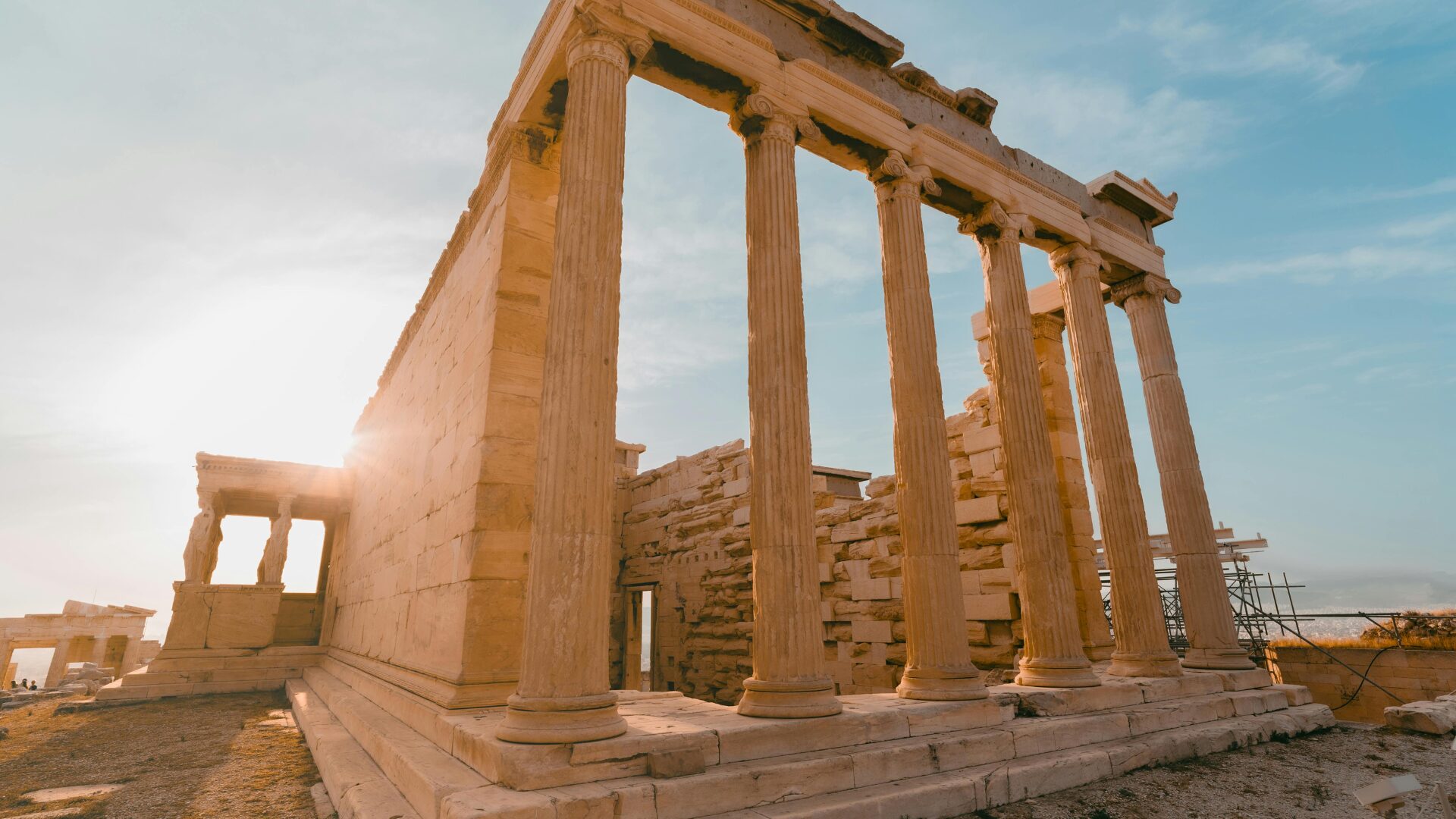
The Ancient Agora and Dionysos
A short walk down from the Acropolis, the ancient Agora gave me a real sense of daily life in classical Athens. People once shopped, met politicians, and debated ideas here—it was the heart of ancient democracy.
Ruins of stoa, temples, and statues make it easy to imagine the crowds from 2,000 years ago.
Nearby, the Theatre of Dionysos took me straight into the world of Greek drama. This is the oldest theater in Athens, where plays by Sophocles and Euripides first hit the stage.
Sitting among the old stone seats, I could almost hear ancient applause. Both the Agora and the space devoted to Dionysos connect culture, worship, and entertainment in ways that still feel familiar today.
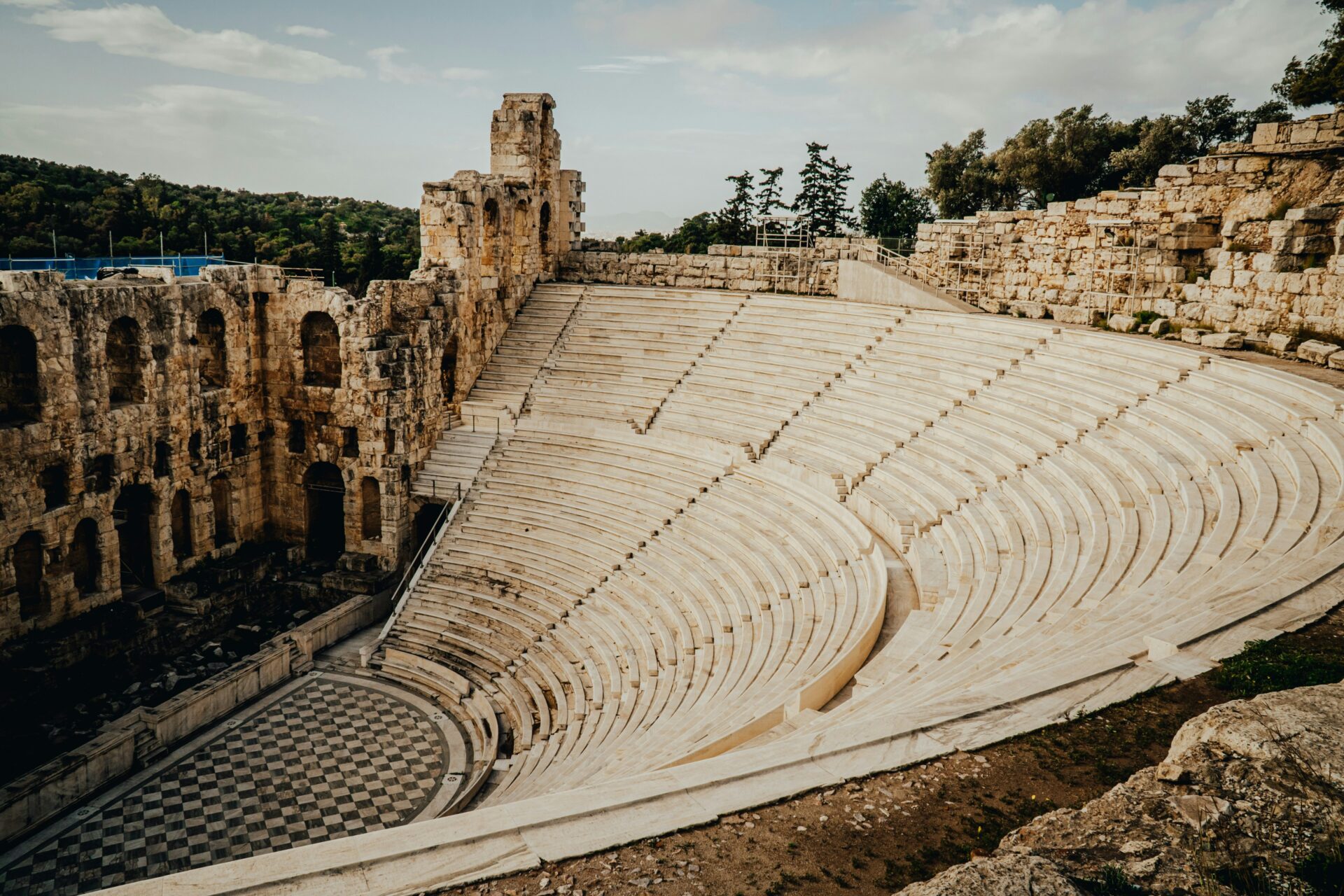
Practical Tips for Visiting the Acropolis Museum
Visiting the Acropolis Museum can be amazing if you plan ahead. Good timing, the right places to relax, and how you explore the area all make a big difference.
Best Times and Photography Advice
I’ve found that showing up early in the morning makes everything a lot smoother. Before 10 a.m., the crowds are lighter and the galleries feel almost peaceful. If I can’t make it in the morning, I’ll try for late afternoon—especially on a weekday.
I usually take non-flash photos, since most areas allow it, but not everywhere. Signs tell me where I can and can’t snap pictures, and I always respect the no-photo zones.
The top floor, the Parthenon Gallery, offers a striking view of the Acropolis. On sunny days, the natural light just pours in and makes for some great shots.
Tips:
- I bring a lightweight camera or make sure my phone’s charged.
- I skip large backpacks, since the staff asks me to check them anyway.
Acropolis Museum Restaurant and Facilities
Lunch at the Acropolis Museum Restaurant is honestly a highlight. The balcony has this panoramic view of the Parthenon and Athens—sometimes I just sit there and watch the city for a while.
The menu focuses on Greek dishes that taste fresh and light, and they’re not as pricey as you’d expect. I usually grab lunch after I’ve seen the main galleries and need a break.
The museum itself feels clean and modern. I can find restrooms on every floor, and lockers sit right by the coat check.
The shop downstairs has some unique books and souvenirs. I always try to save a few minutes to look around.
| Facility | Location | Tip |
|---|---|---|
| Restaurant | Top floor | Great view, book ahead if possible |
| Lockers | Near entrance | For bags and backpacks |
| Restrooms | All floors | Clean and accessible |
| Shop | Ground floor | Local gifts and books |
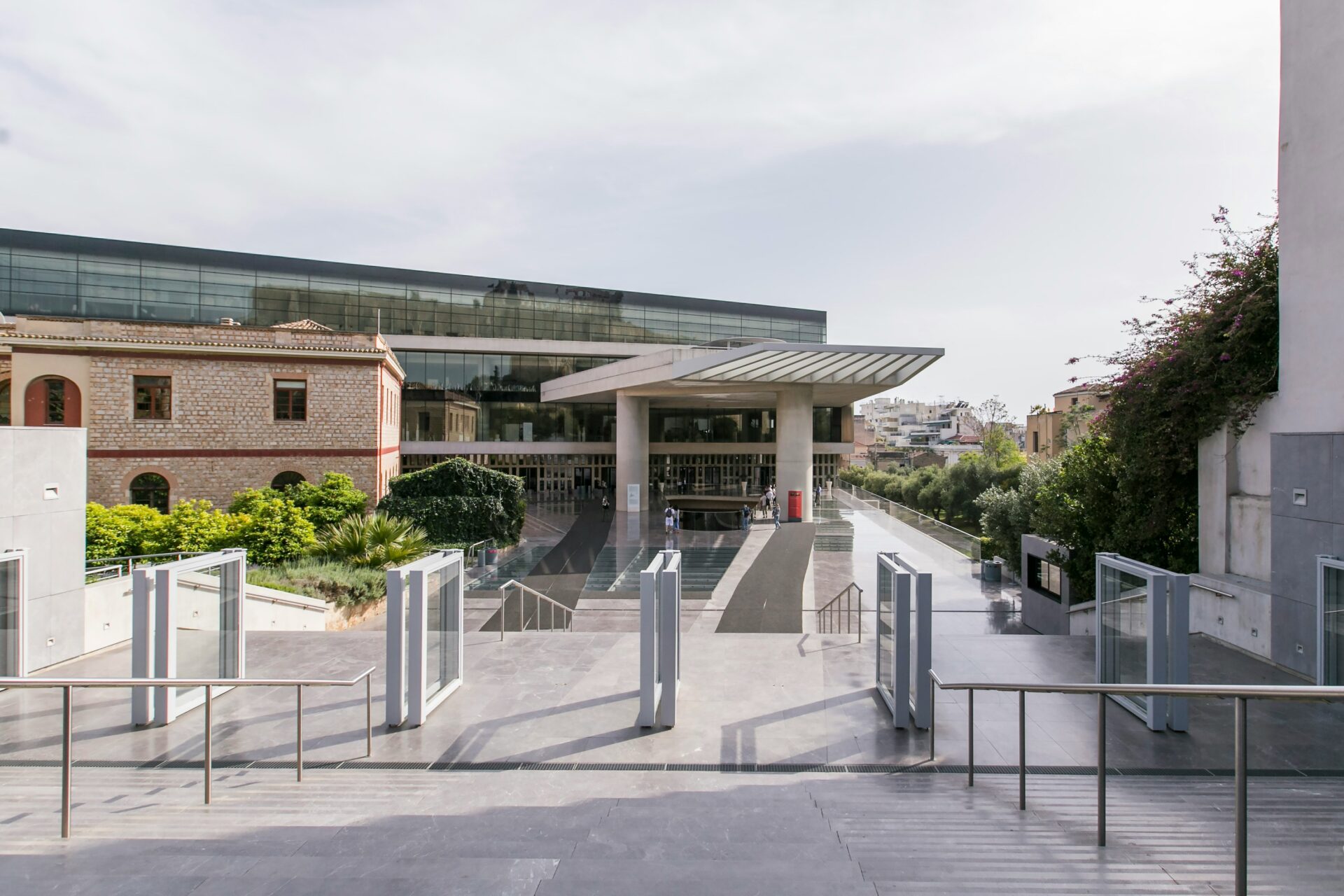
How to Explore Athens’ Surroundings
Once I’m done at the museum, I always head out to see what’s nearby. The Acropolis itself is right there, but wandering into Plaka feels like stepping into a maze of narrow streets, cafés, and little shops.
It’s lively, a bit chaotic, and totally historic. Just a ten-minute walk takes me to the National Gardens—such a calm escape from Athens’ busy traffic.
Hadrian’s Arch stands nearby, leading straight to the Temple of Olympian Zeus. I love those ancient columns—they’re so tall, it’s hard not to stare.
If the sun’s out, the Olympic Stadium absolutely shines in white marble. It’s close enough to reach on foot.
I usually plan my route this way:
- Acropolis Museum
- Acropolis and Parthenon
- Plaka neighborhood stroll
- Hadrian’s Arch
- Temple of Olympian Zeus
- National Gardens
- Olympic Stadium

Each spot shows off a different side of Athens. Linking what I learned in the museum to these places helps the whole city’s story click.
Why Visiting the Acropolis Museum Deepened My Appreciation for the Parthenon
Walking through the Acropolis Museum totally changed how I see the Parthenon now. The artifacts, stories, and even the building itself helped me connect ancient history to the present in a way I never felt just standing outside.
Understanding Ancient Craftsmanship
As soon as I stepped into the Parthenon gallery, I realized how much detail those ancient artists put into every marble piece. The museum lets me get close to sculptures and panels—many of them originals from the Parthenon.
Standing on the Acropolis and glancing at old columns is one thing, but examining carvings of gods and mythical scenes up close is something else.
Learning about the craftsmen who worked under Pericles made ancient Athens feel more real. The museum gives easy-to-read descriptions, and models show how artists made both lifelike and abstract figures.
Seeing sections from the friezes and pediments, even damaged ones, helped me imagine what the building looked like in its prime.
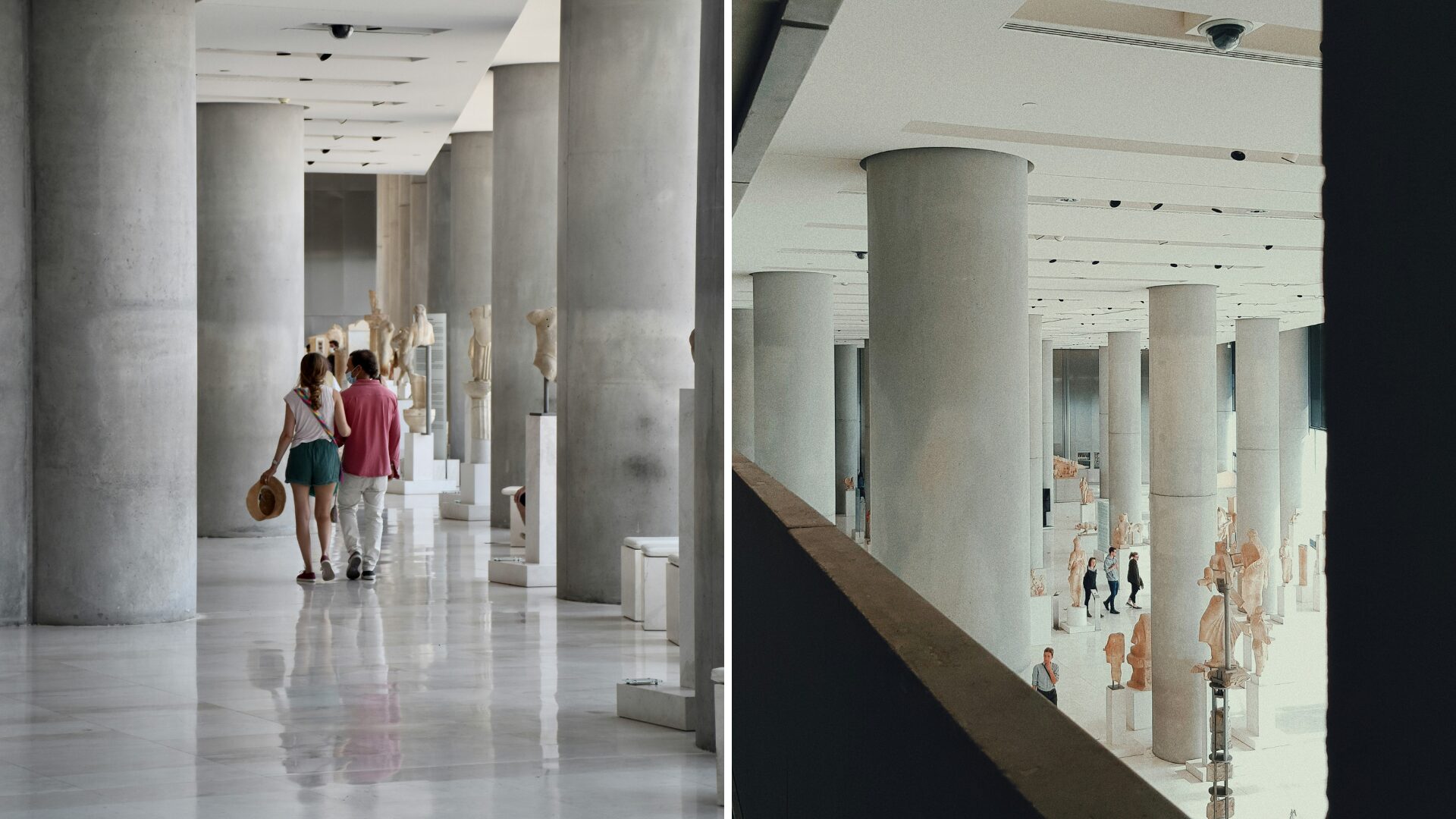
If you love Greek history or iconic sites like the Parthenon, these displays break down the skills and stories carved into marble centuries ago. I ended up spending way longer than I expected, especially at statues that might have represented Hera or other gods.
The Museum’s Modern Approach to History
The New Acropolis Museum does more than preserve the past. Bright glass walls and open spaces make the ancient world feel close and immediate.
Floor-to-ceiling windows face the Parthenon, so the galleries inside connect directly to the monument outside.
Interactive exhibits and simple timelines helped me piece together Athens’ history—from the Greek Bronze Age all the way to Roman and Byzantine times.
I loved learning how they found artifacts on the Acropolis and the surrounding slopes. Digital reconstructions of lost pieces filled in a lot of gaps from my earlier visits to the ruins.
The way the museum places originals and replicas side by side lets visitors see which sculptures are missing or in other museums. This layout sparks debates about the return of the Parthenon Sculptures while still honoring where they came from.
Personal Reflections and Takeaways
Walking inside the museum just hit differently than wandering around outdoor ruins. When I stood among all those sculptures and artifacts, I could actually imagine what the Parthenon and its surroundings looked like back in ancient Athens.
I walked out with a much stronger connection to the builders and artists behind the Parthenon. The Acropolis Museum really gave me context—it didn’t just show what survived; it helped me understand why any of it mattered at all.

Learning about Pericles’ vision for Athens made the whole project feel more relatable. Suddenly, the city’s story felt anchored in real people and real events.
If you’re even a little curious about Greek culture or history, go to this museum before or after the Acropolis. It just makes the whole experience richer. I tell my friends to check it out, even if they’re only in Athens for a day or two.

